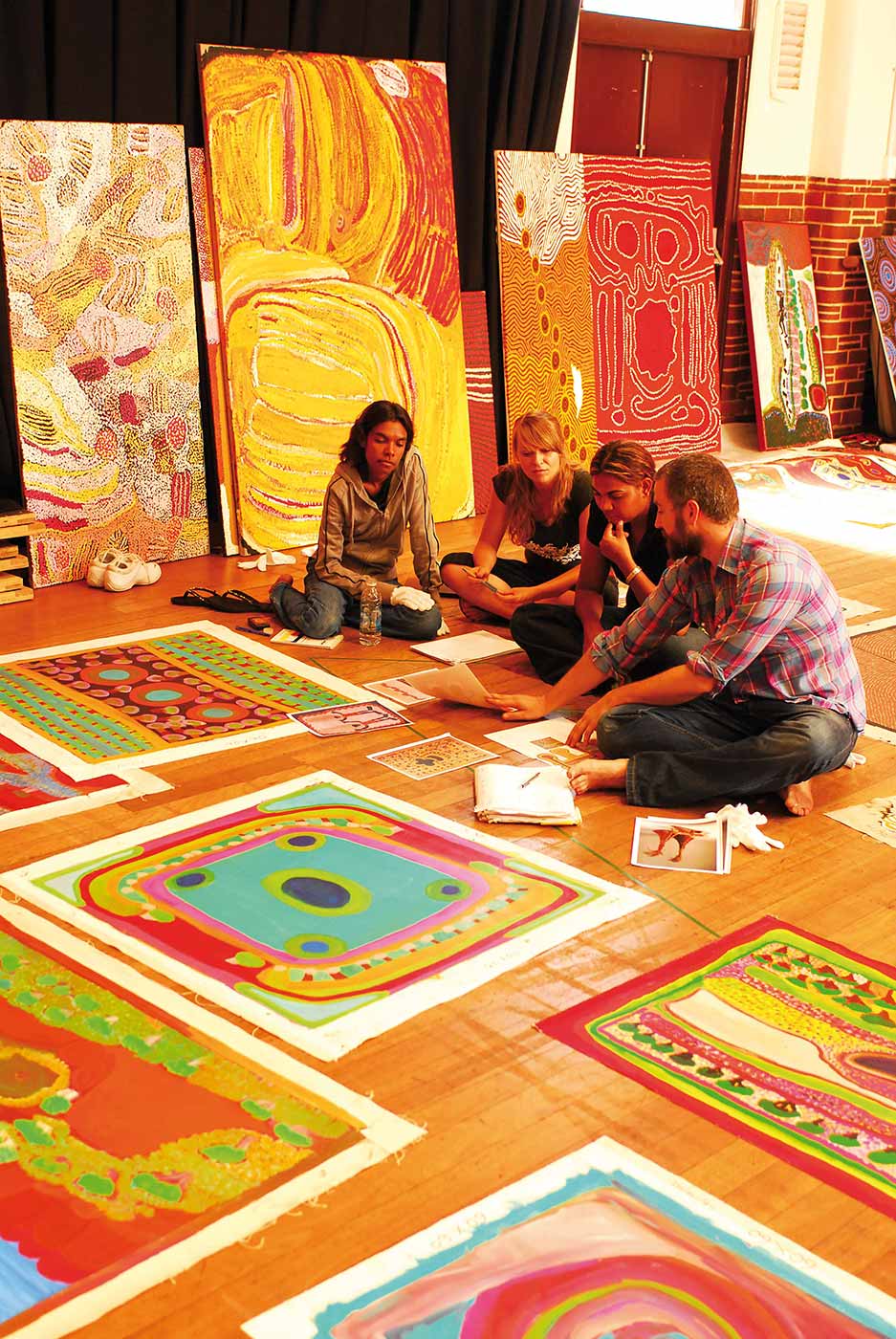The story behind the Canning Stock Route project (part seven)
Doolmarria Louise Mengil, Palm Spring, 2009:
To be able to say, 'We are different and we're never going to be the same; that this is our story about the Canning Stock Route and this is how we're telling it'. Even if people just take away that little bit, it's a huge step. It's not one way of interpreting or telling a story, it's so many different ways and this exhibition explains so many levels and so many hard years of working with artists.

A rich cultural repository of oral history lies at the heart of the Canning Stock Route collection.
Conveyed with great dignity, grace and humour, the oral histories bring into the light of the present the tragic experiences and misunderstandings of the past.
Almost all of them were recorded in people's traditional languages. Eighty of the 120 stories were translated by a team of Aboriginal translators led by Ngalangka Nola Taylor and Putuparri Tom Lawford, allowing broader access to this history for the first time.
It was only in early 2009, with the partnership with the Museum in place, that the detailed curatorial work for the Yiwarra Kuju exhibition really began. And these oral history stories were to prove central to the project team's curatorial vision for this exhibition.
In addition to the works of art and oral histories, the collection also embraces a rich cultural fund of historical research, social and cultural data, and artists' biographies, as well as a library of photography and film.
The breadth and quantity of material is extensive: 20,000 photographs, over 200 hours of film footage, more than 100 interviews, maps and masses of archival research results. Film footage of the project team's work across the country, from the remote communities to Canberra, was also shot.
The project made innovative use of film and multimedia through the efforts of Clint Dixon, KJ Kenneth Martin, Curtis Taylor and Morika Biljabu, working under the supervision of film director and mentor Nicole Ma. Together they have documented most project activities: workshops and bush trips in urban and Country settings, and meetings and personal interviews with artists and contributors.
Morika, KJ and Clint made a suite of short films while completing sections of the stock route trip.
KJ Kenneth Martin, Perth, 2009:
In 2007 I flew to Kunawarritji and met all the artists and the team. I travelled all the way up for nearly three weeks back home to Halls [Creek], taking photos, learning about all the different groups and understanding why painting is important. I made a film out there in the desert too and now I'm filming the co-curators building this exhibition.
Film and multimedia represents a major communication tool for the exhibition. The rich content that has been developed can be seen in the innovative 'One road interactive' installation; in keeping with the project's multidisciplinary approach, this presentation merges artistic, cultural, historical, ecological and scientific data.
The choice of Canberra as the launch venue for Yiwarra Kuju aligns with the artists’ desire to have their stories seen, heard and understood by Australia’s decision-makers.
As the late artist Charlie Wallabi (Walapayi) Tjungurrayi predicted in 2007, while sitting on the grassy earth at Well 46, his large hands stretched wide and high in the air, ‘Ngurra kuju walyja! [Country one family]. Canberra! Up in lights!’
The story behind the project: